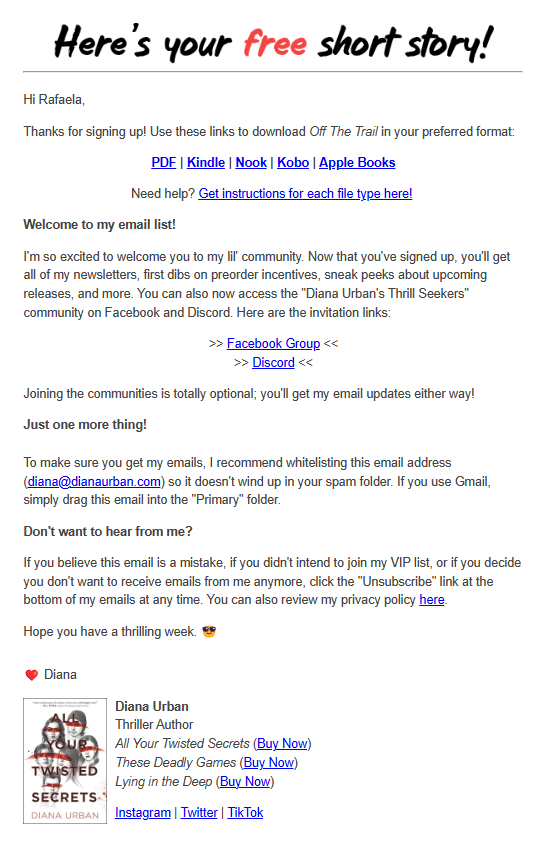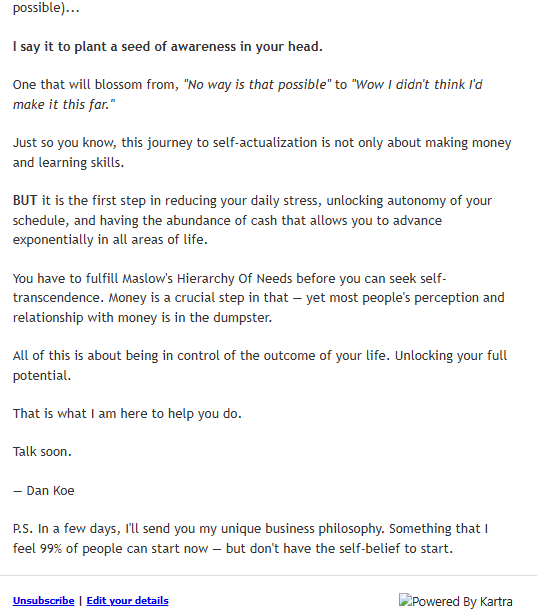You’re strolling in the crisp morning, a steaming cup of coffee warming your hands, lost in thought…
Suddenly, a stranger’s bold proposition stops you dead in your tracks:
“Would you be open to significantly enhancing your sales, rapport with your fanbase, and engagement… all on autopilot?” they exclaim.
Initially, you’re taken aback, wondering when pushy sales tactics took over your peaceful neighborhood…
You walk away, dismissing it as just another gimmick.
But what if there’s a grain of truth in that bold claim?
What if there’s a legitimate, criminally underutilized strategy that could transform your business?
Enter email marketing, and more precisely, a well-crafted welcome email sequence.
What Is a Welcome Sequence?
A welcome sequence is a series of automated emails triggered when someone subscribes to your list, often after signing up for a lead magnet or “freebie.”
I’d never resort to jump-scares in real life to make a point, but I must stress this:
Most coaches simply hand over the freebie along with a welcome message and then quickly lump new subscribers in with the old ones.
That’s a missed opportunity right there.
To extract the full value from the welcome sequence, you should create a strategic 3 to 4-part email series.
This sequence isn’t just about delivering the freebie—it’s a crucial touchpoint that can significantly boost engagement, rapport, and ultimately, sales.
Why Is the Welcome Sequence So Critical?
- A strategic welcome sequence sets the ground for what’s to come, recounts your mission and personal story (in a relevant-to-the-reader way), and establishes a temptation for your paid offerings.
- Welcome messages consistently achieve open rates of up to 50%, making them the most open emails in any marketing strategy. This engagement level is unparalleled compared to regular newsletters or promotional emails.
- The value of a new subscriber cannot be overstated. A “hot lead”, is far more likely to interact with your content and offers than an old unengaged subscriber. You never get a second chance to make a first impression.
- The best part? It’s completely automated! You craft a powerful series of emails once, and this sequence works for you in your sleep.
The Best Welcome Sequence for Coaches
Let’s dive into the best structure I follow with my clients. Keep in mind that if you operate in the e-commerce space, the psychology remains the same, but the execution differs.
Email 0: Here’s the Freebie They Signed Up For
Timing: Immediately after the prospect subscribes
Content: Give them what they asked for. Encourage them to engage with the freebie by highlighting how it will benefit their lives.
Bonus Points: Briefly get them excited for what’s to come, and kindly ask them to whitelist your email address. Maintain the brand voice they recognize and appreciate, as this consistency will strengthen trust.
Note: If your freebie is a multi-day series, integrate it with the welcome sequence. Aim for concise and engaging content.
Email 1: The Official Welcome
Timing: 24 hours after the freebie delivery
Content: Thank them for joining your community and emphasize the benefits of being part of it. Offer a glimpse into your life, not just as a coach but as a person passionate about your craft. Then, nudge them to engage with the freebie.
Bonus Points: This email is your chance to set the tone for the relationship. Empathize with them by acknowledging their challenges and presenting yourself as the solution, without delving into specifics yet.
Email 2: More on Your Mission
Timing: 24 hours after email 1
Content: Connect deeper by sharing your wellness journey or a client’s transformative experience (with their consent). Stories resonate and make your coaching approach relatable and real.
Bonus points: Tie your story back to them. After they read this email they should:
a) Know more about where you came from and why you do what you do
b) Understand what makes your coaching style better. What is your unique advantage/mechanism/value proposition?
Email 3: Gentle Introduction to Your Services
Timing: 24 hours after email 2
Content: Introduce your services or products softly, focusing on how they align with your subscriber’s journey. This isn’t a hard sell but an informative nudge towards how you can support them further.
Bonus Points: Include social proof. If the email is already too long, consider dedicating another one to highlight significant client successes.
Email 4: Further Engagement and Feedback
Timing: 24 hours after email 3
Content: Encourage active participation by inviting them to hit “reply” and share their story or goals with you. Ask about their challenges, interests, or any particular topics they’d like to learn more about.
Great Examples to Take Inspiration From
Email 0 – Diana Urban

Email 1 – Lea Does LinkedIn


Email 2 – Dan Koe



Email 3 – Marie Forleo


Email 4 – Laila Ali
